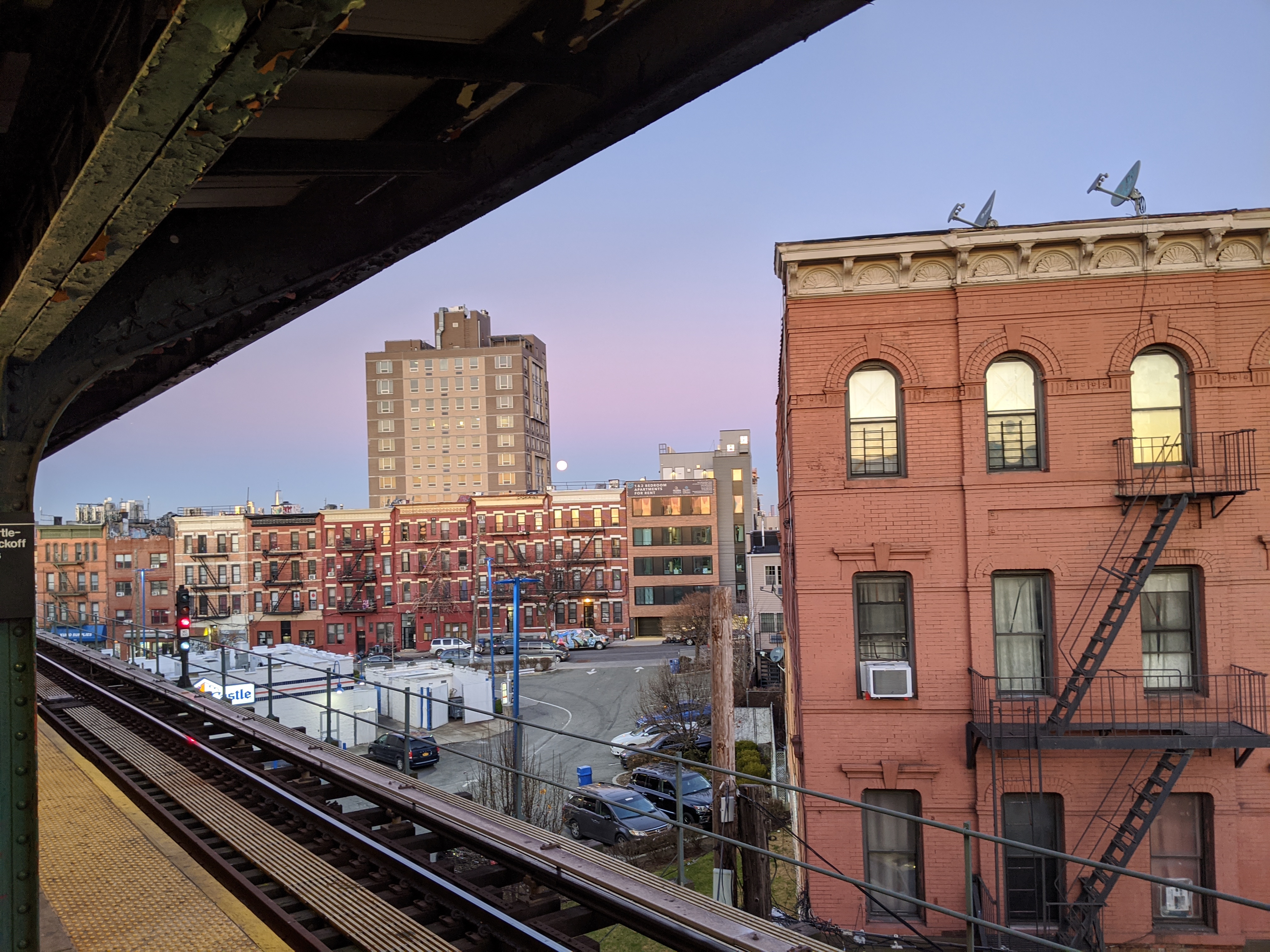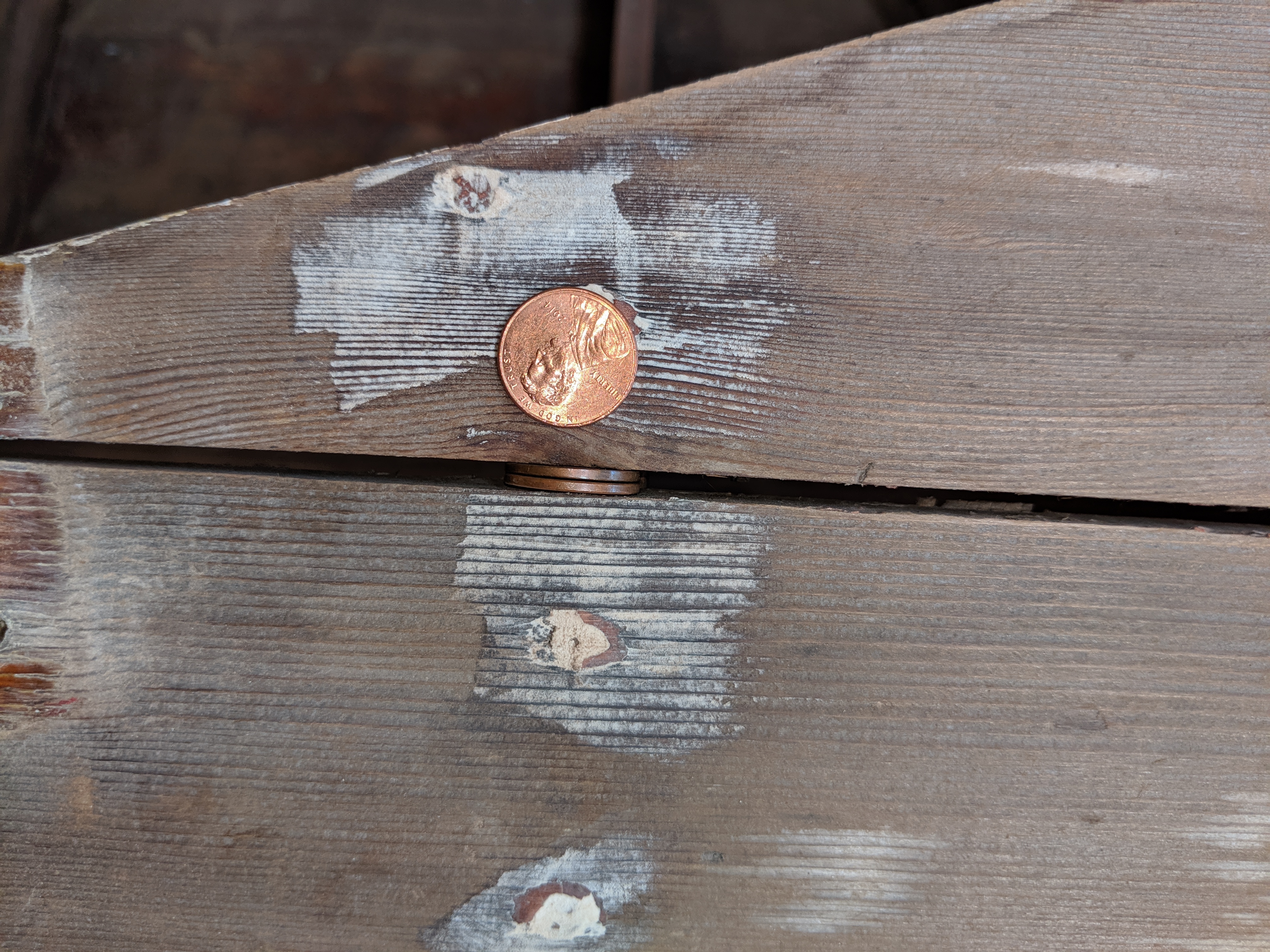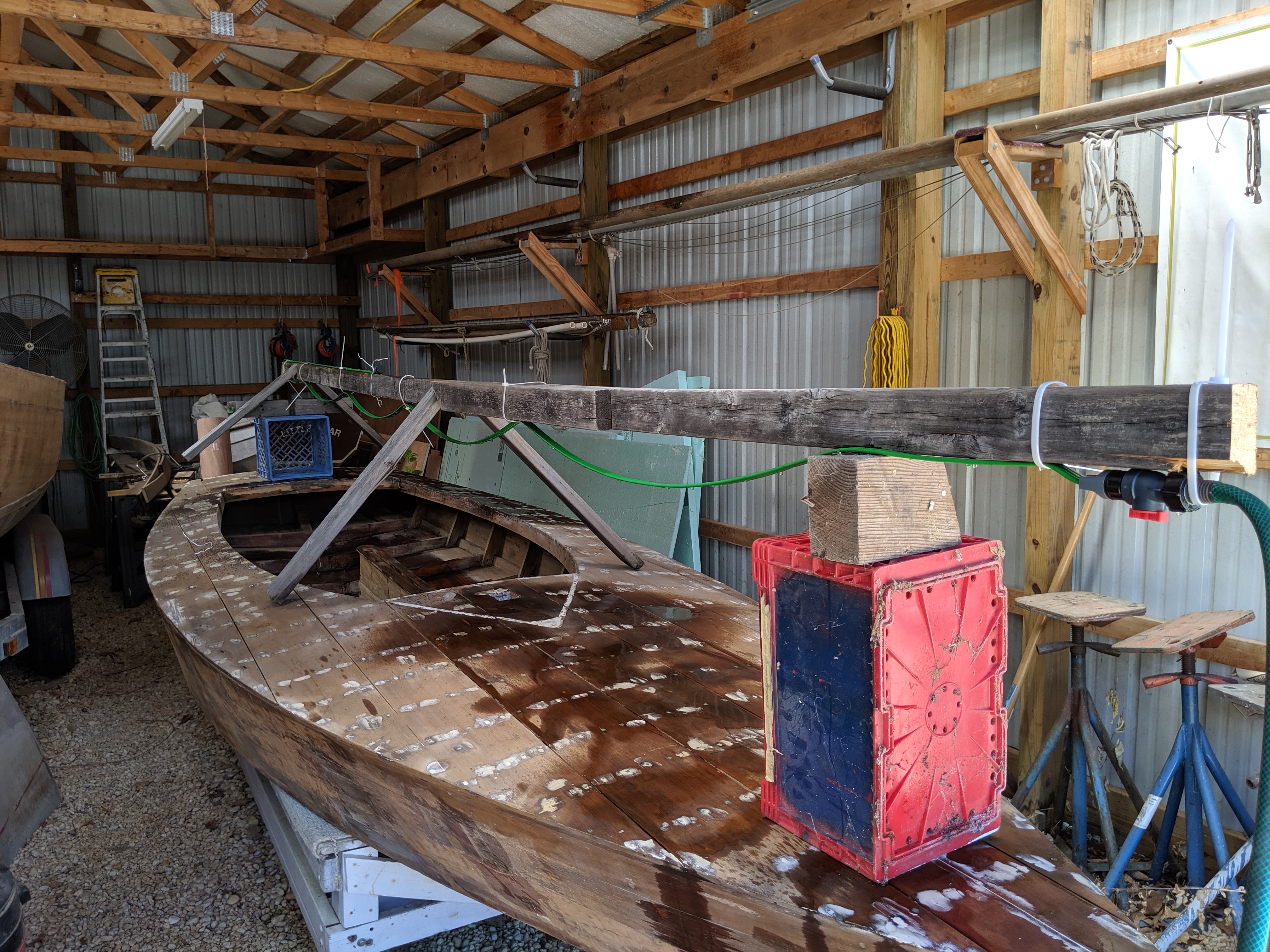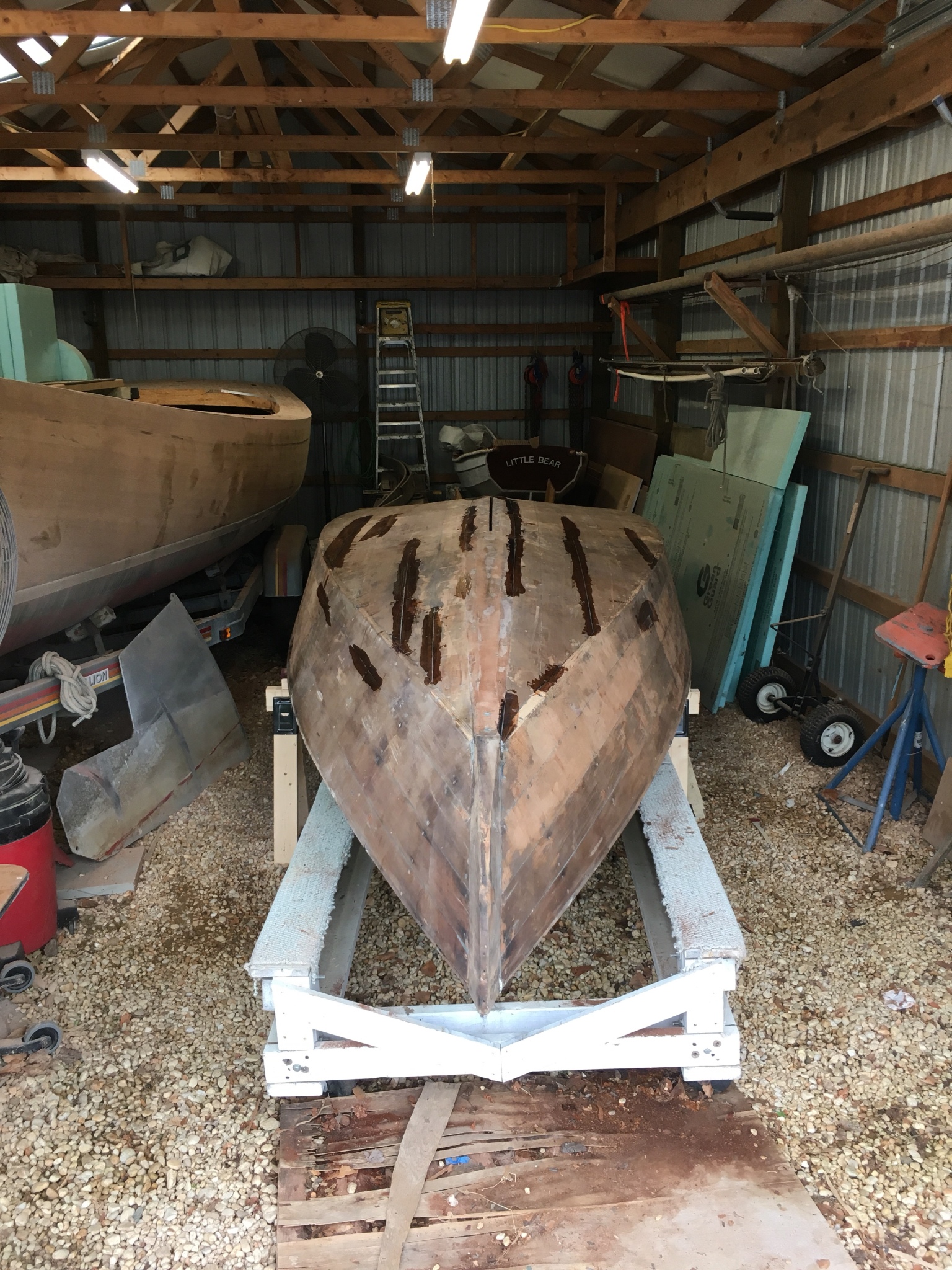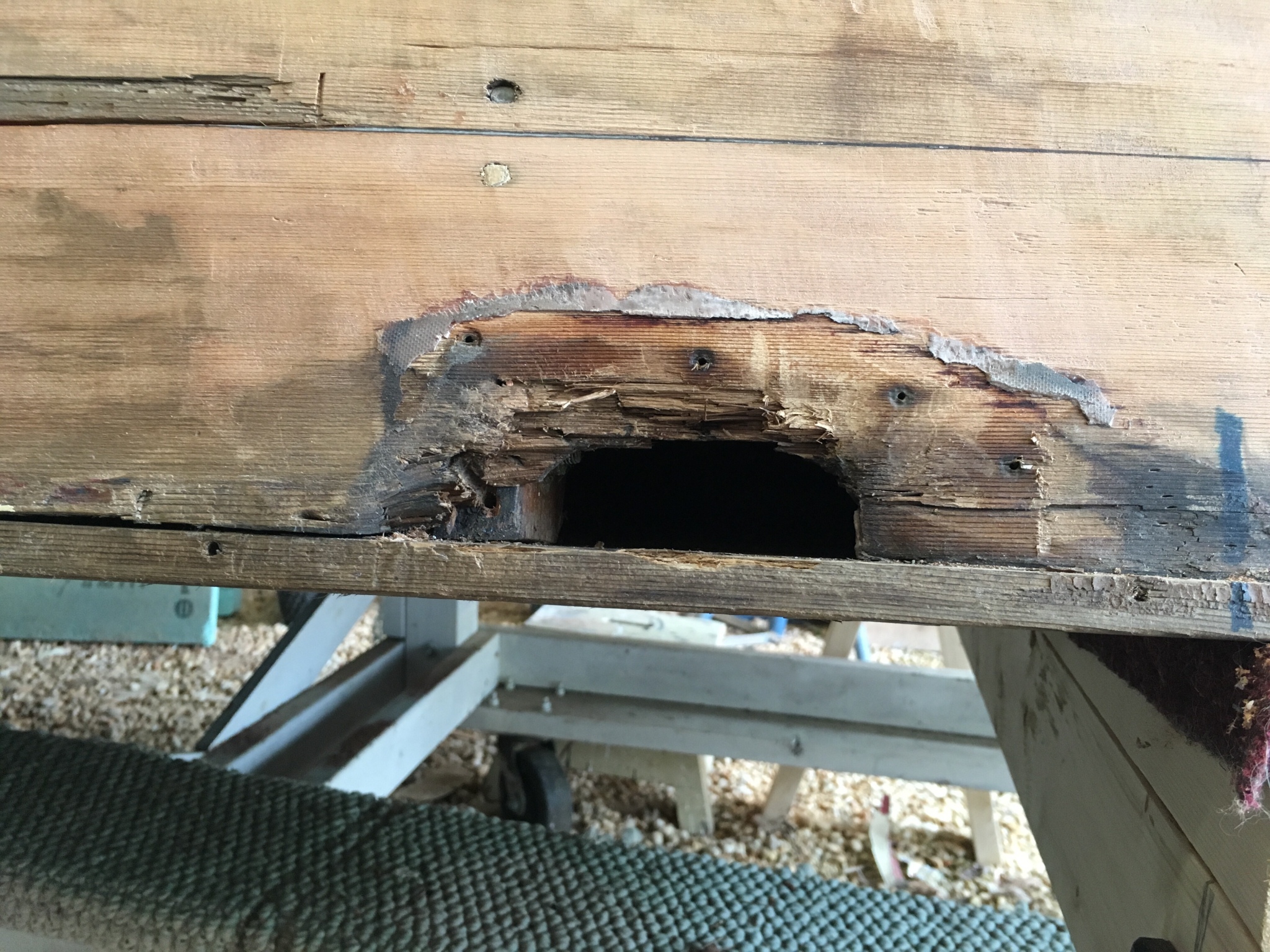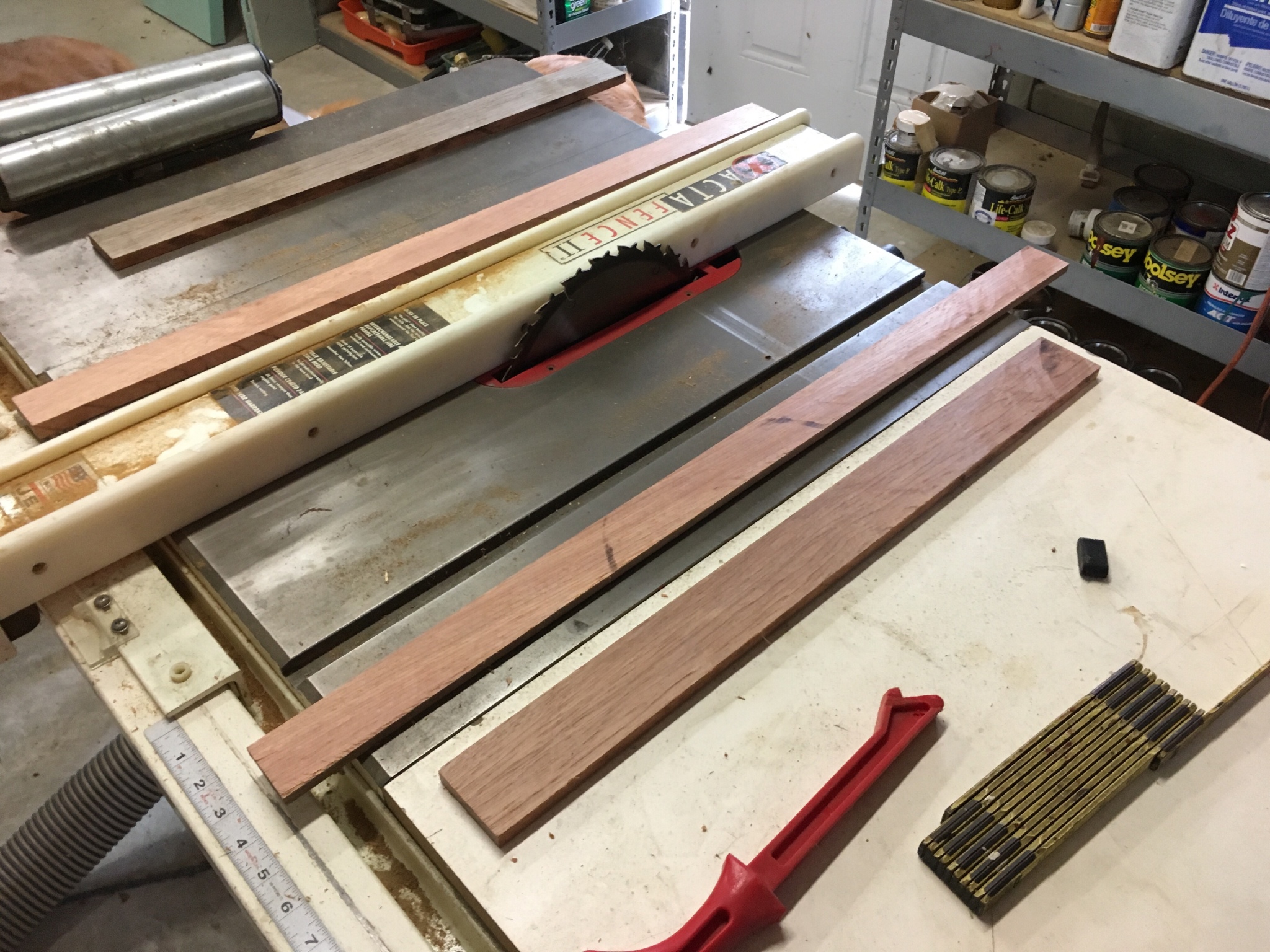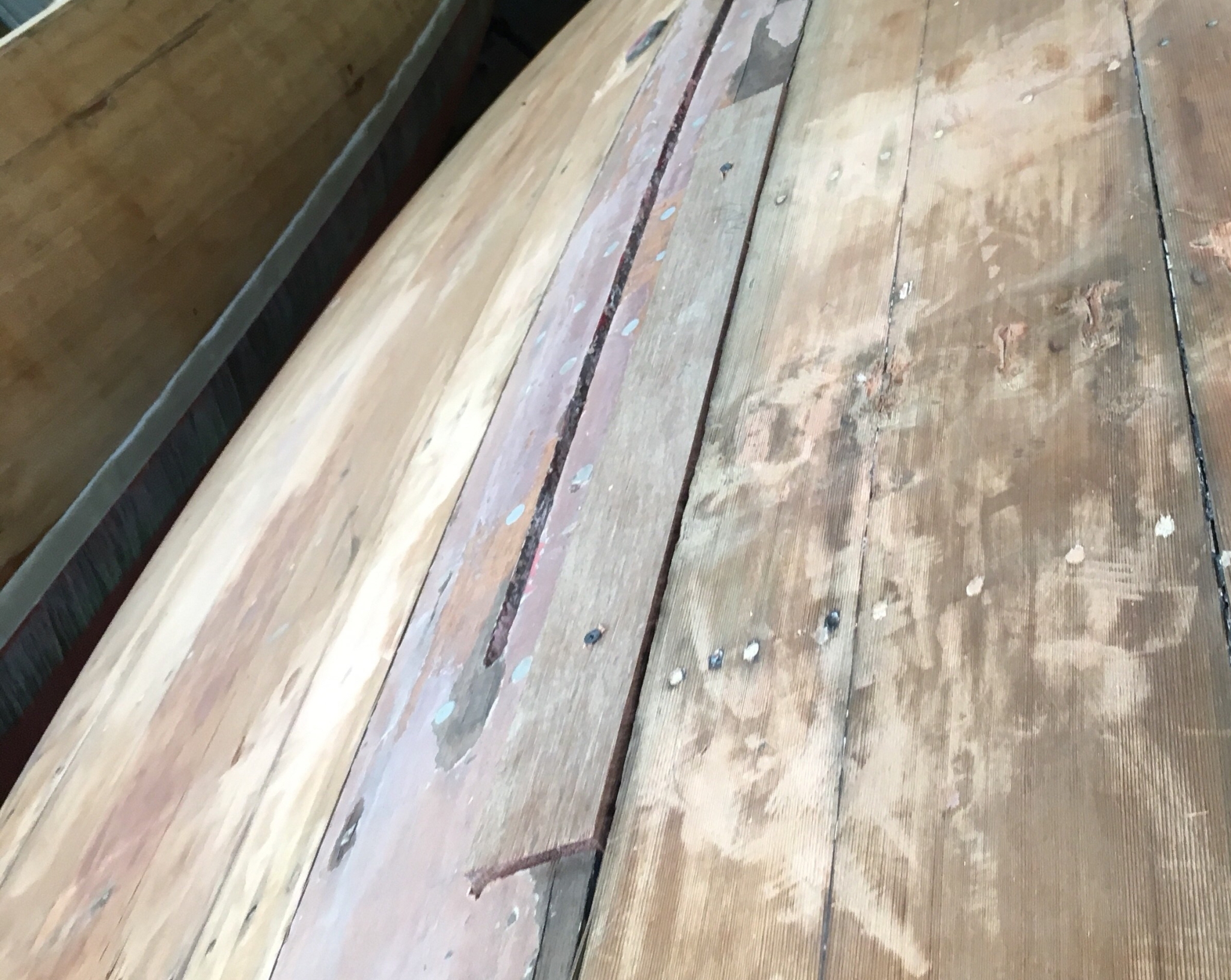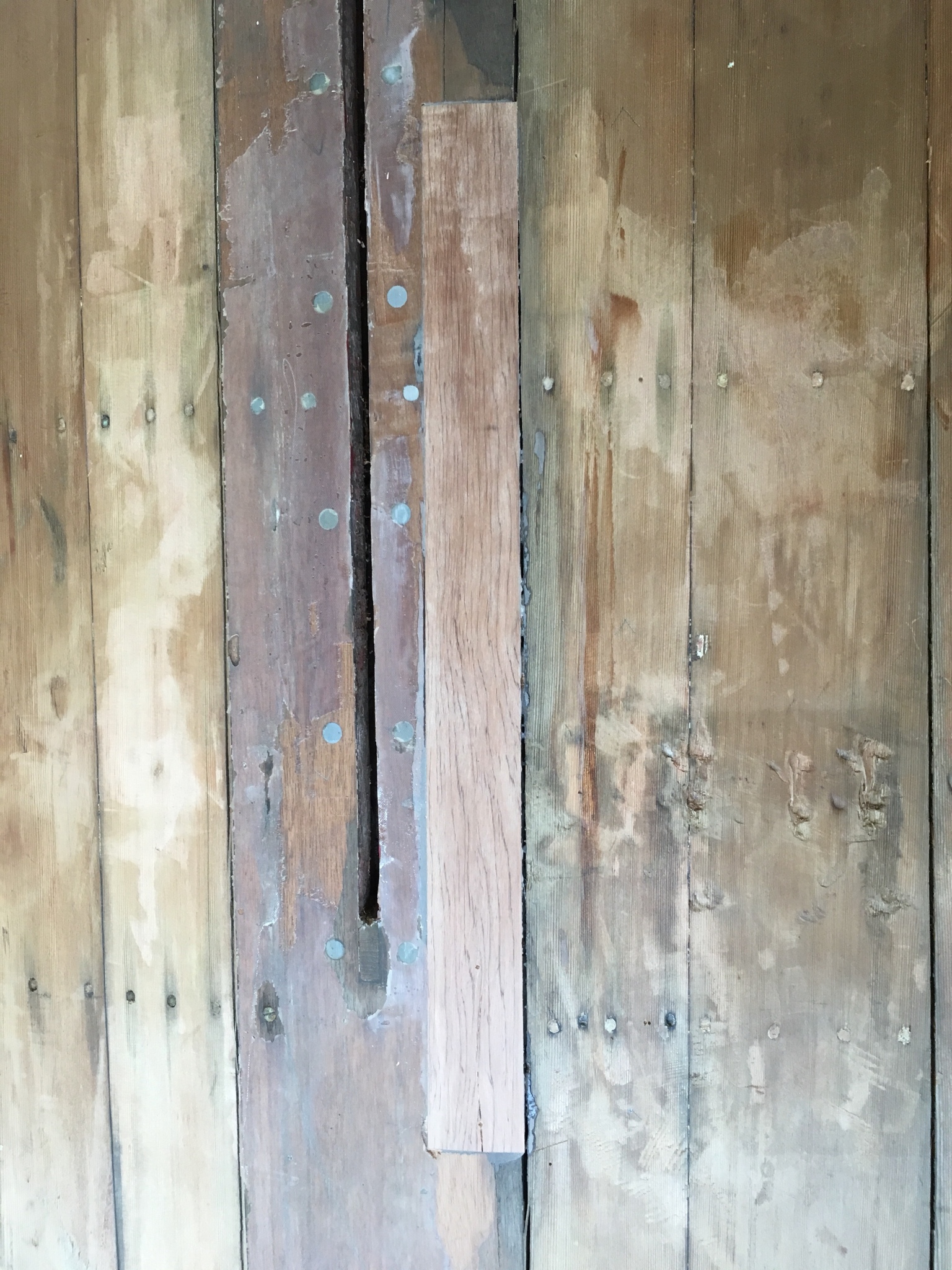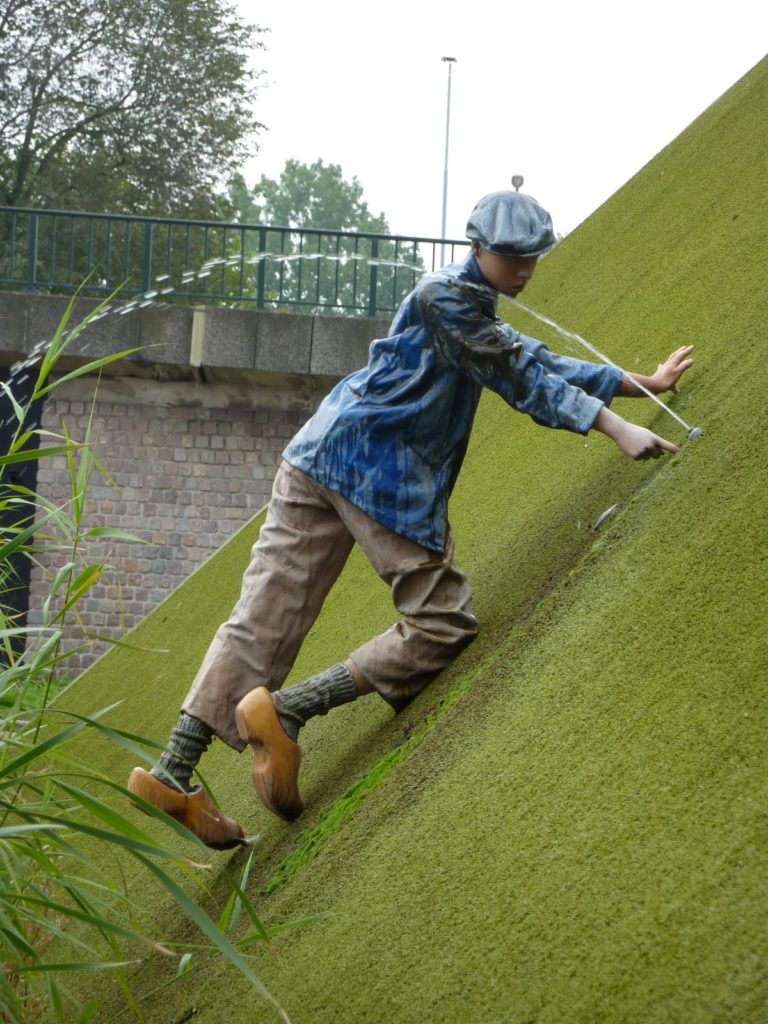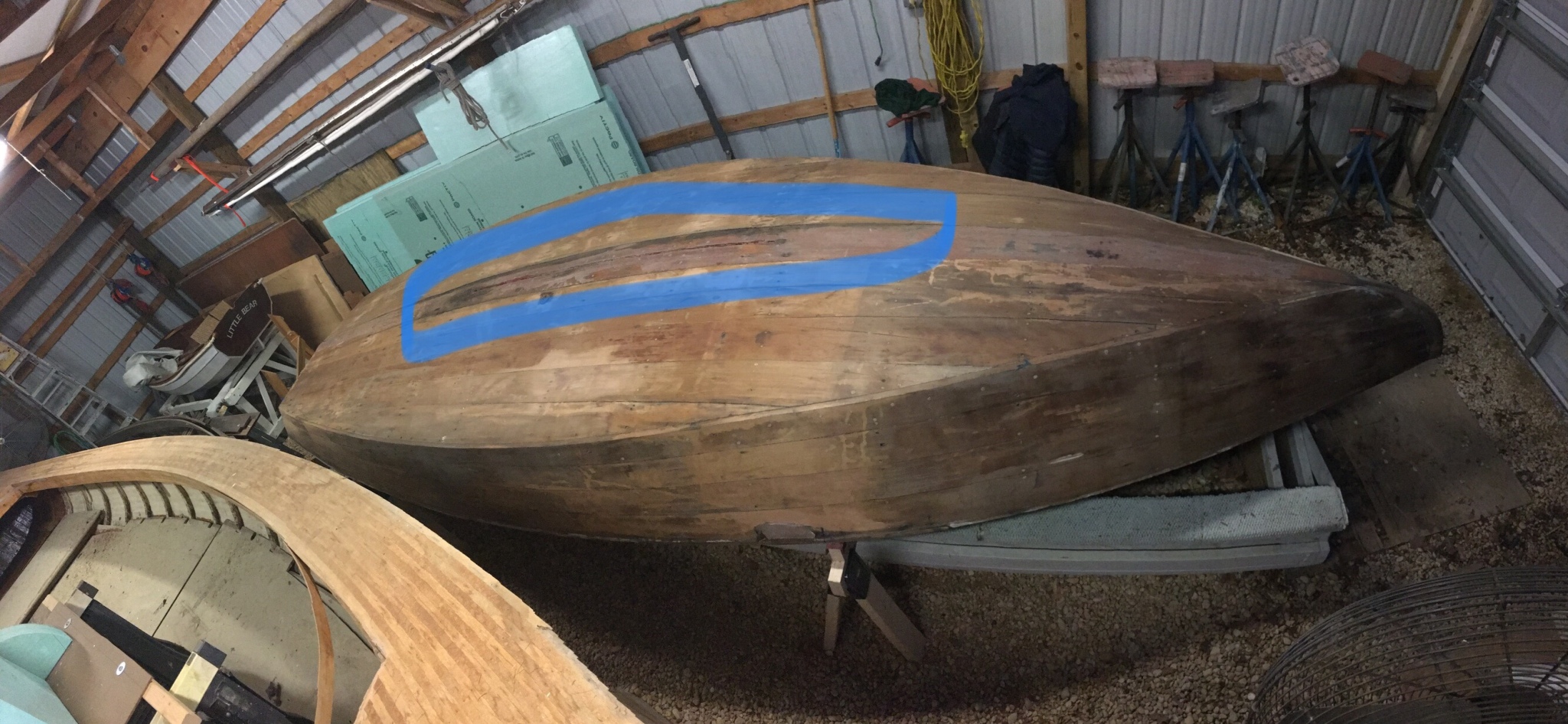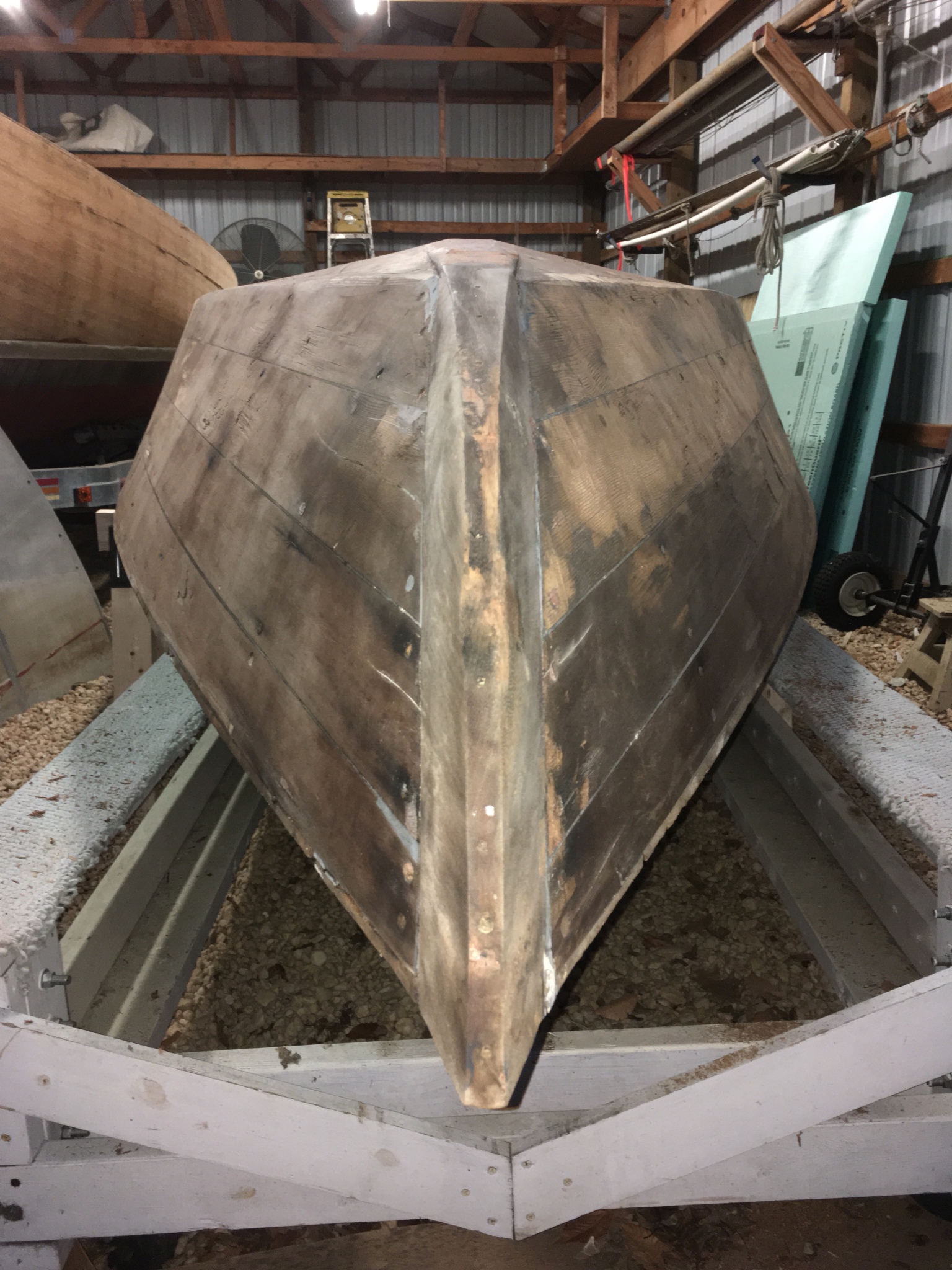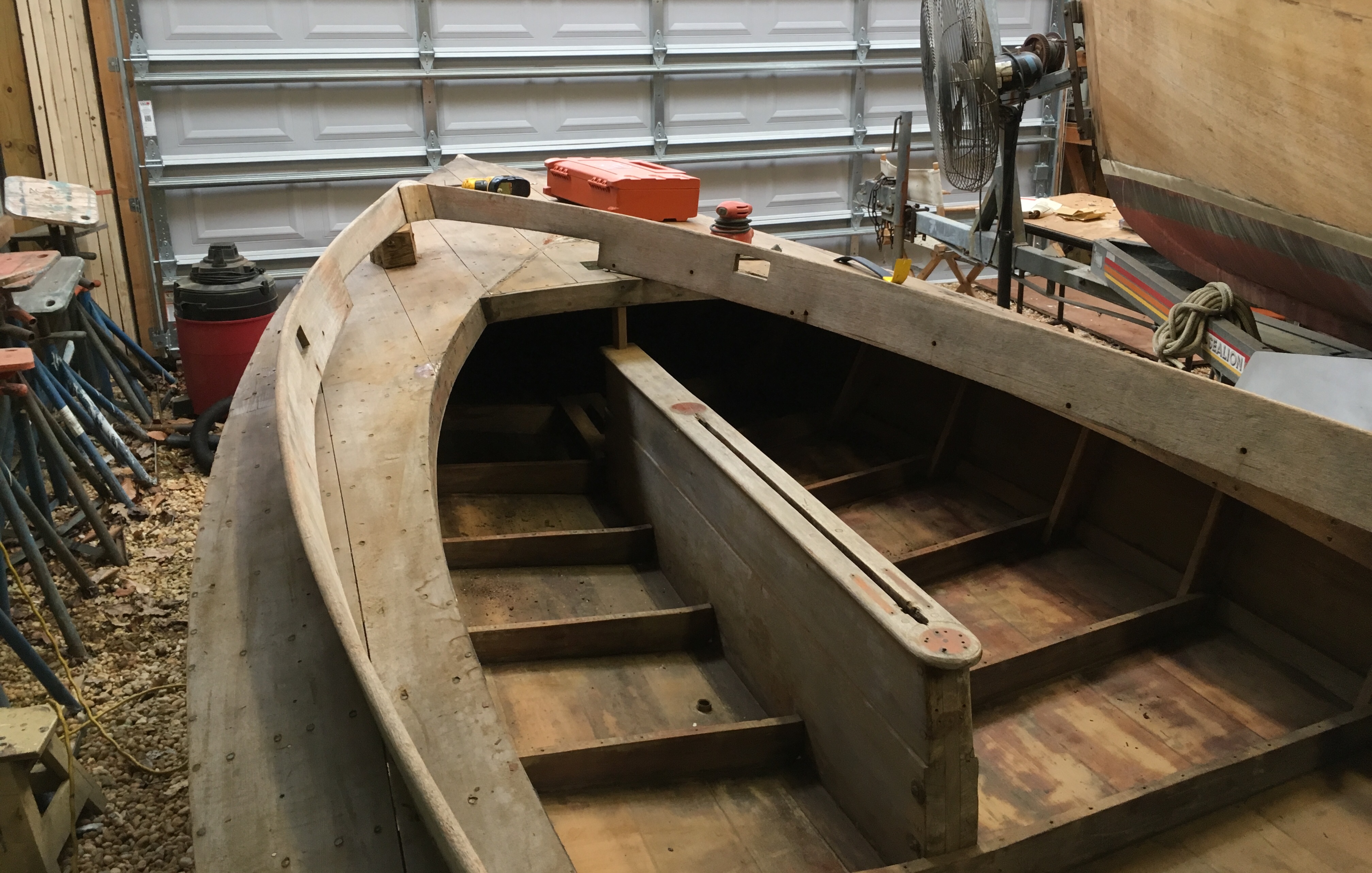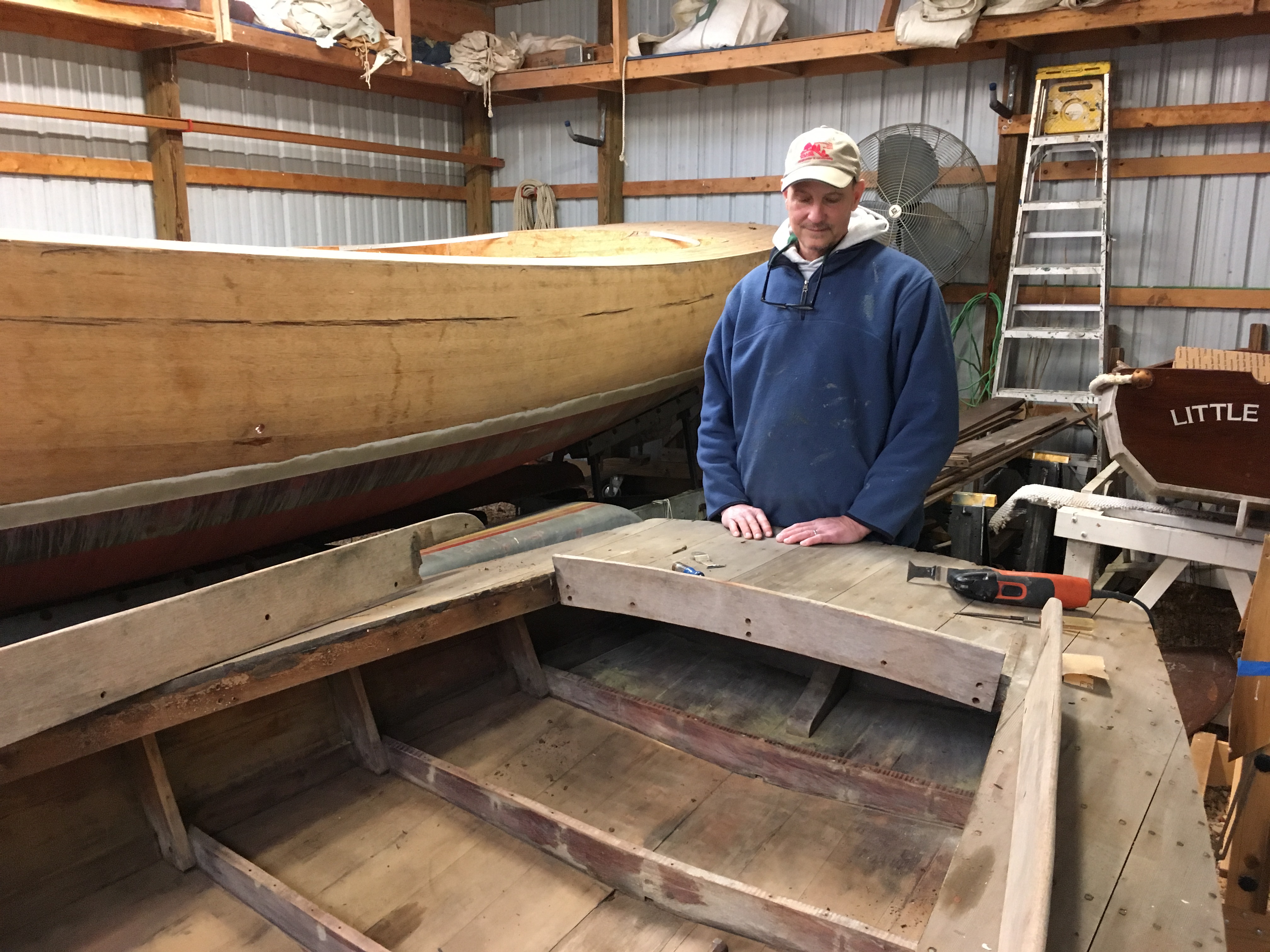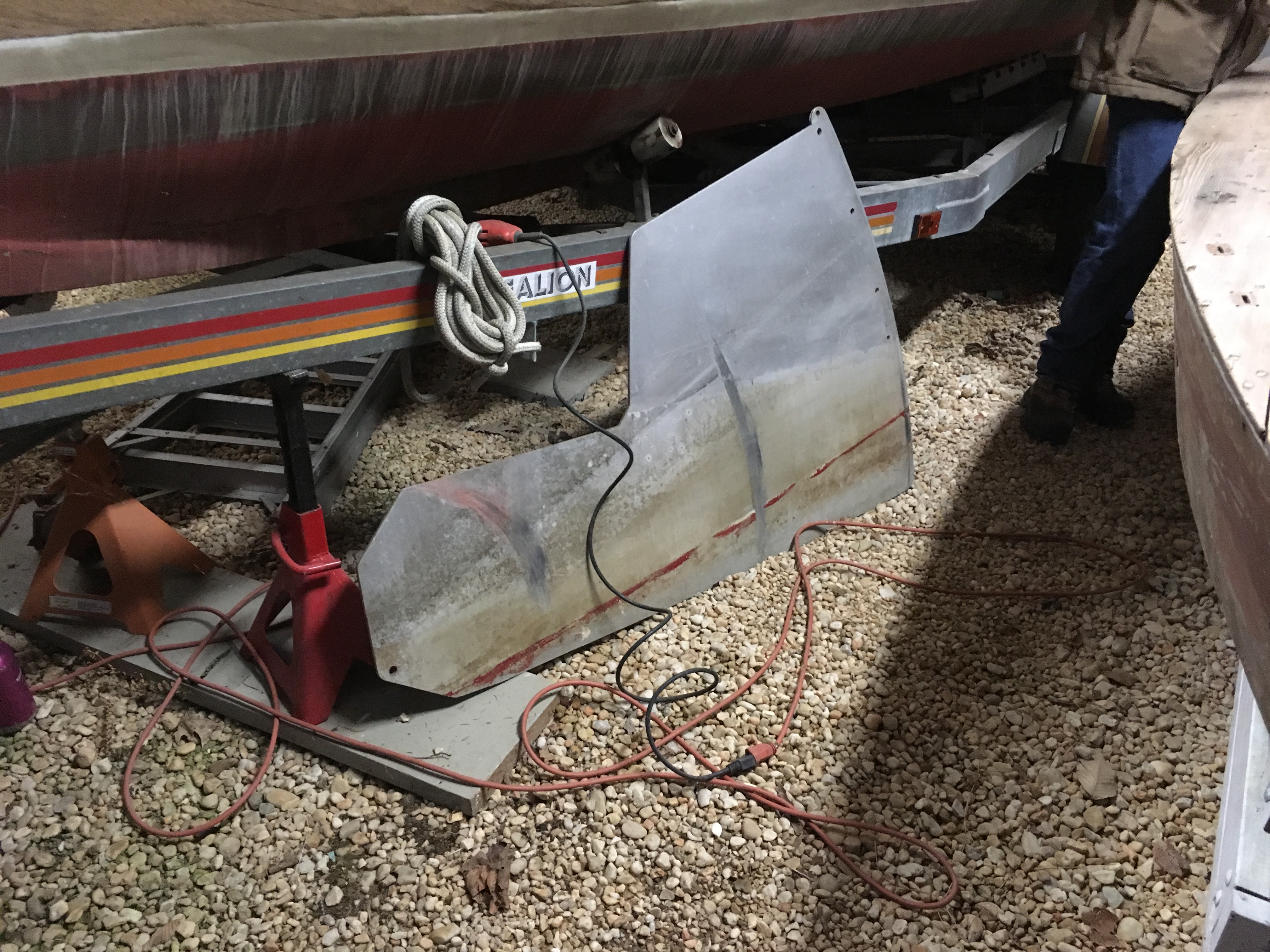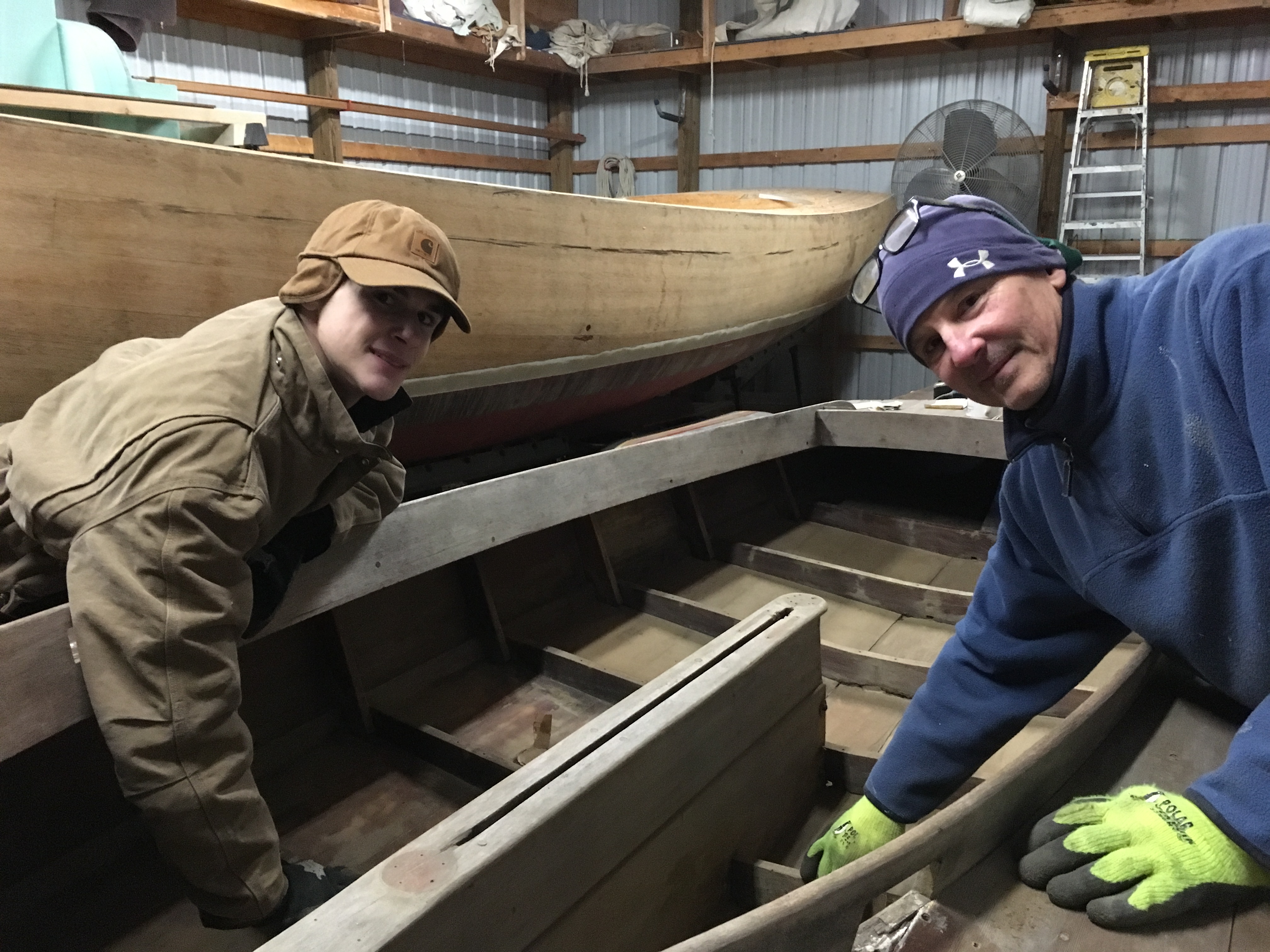After a year of graduate school, I made it back to the Eastern Shore with the goal of finishing Chile Willow before I move (yet again) to NYC. Even in landlocked Nashville, TN pursuing an education degree I managed to squeeze wooden boatbuilding into my schoolwork. Below are pictures of boat models aimed to help students conceptualize planes, axes, and lines. Even my thesis examined industrial arts education. Suffice it to say, I’m happy to be back working and thinking with my hands.

The model furthest above is a Beetlecat. Below is a Star (the inspiration for the Hampton!). Constructed with kabob sticks, cereal box cardboard, and a hot glue gun.
Back to Chile Willow though!
Fortunately, Maryland had a mild winter and Bill had no need for extra firewood, so the boat was safe.
If you recall, just before my departure, I unearthed some carnage hidden by a shoddy MarineTex repair job. My more permanent repair options included a Dutchman (see previous posts) or a full plank replacement. Each of Chile’s planks runs from the stem to the transom. This top plank would be a 19′ long red cedar plank. Finding that board at the lumber store, let alone shaping and fastening it may have consumed my whole summer. And while I’m enjoying this process, the end goal is to sail the boat, not work on it. So I opted for the (potentially) three-hour Dutchman fix.
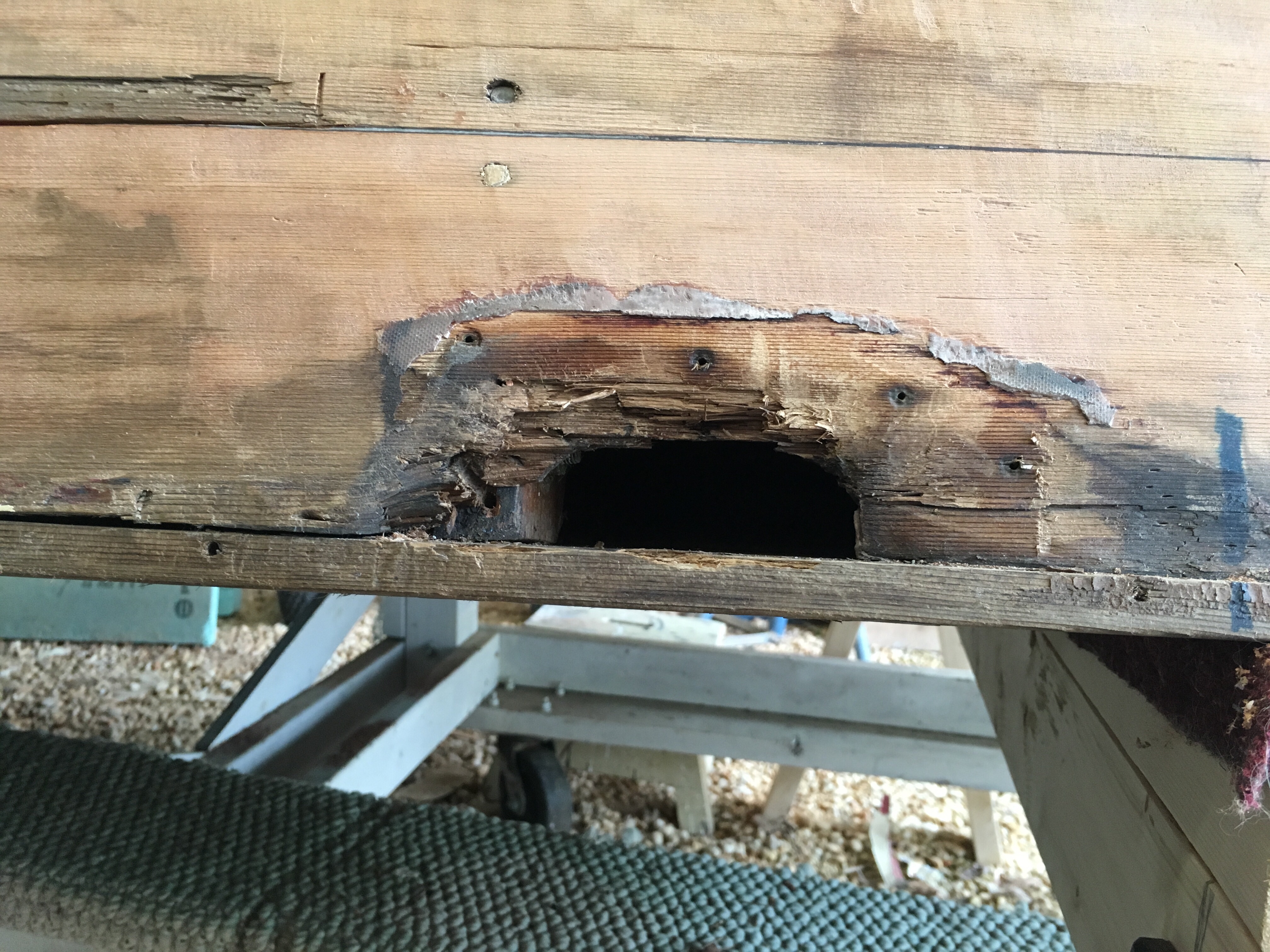
Unlike my Dutchman on the keel, this one required a slightly trickier cut. The surface of the keel was rotten, but I did not need to replace the entire depth of the keel. I.e. there was not a gaping hole. This plank, however, had a hole in it. So I had to consider maximizing glue surface and finding a way to clamp the Dutchman down. So instead of butt joints, the Dutchman required angled cuts.
Step 1: Make a pattern for the Dutchman. Here, I had to be generous in my pattern size so as to account for the 45° angled cuts that would shrink the inside face of the Dutchman.
Step 2: Cut the Dutchman on the table saw by angling the blade.
Step 3: Cut out the section of the plank where the Dutchman will go. This is the hard part. A table saw makes a perfect 45° cut. But we can’t run a boat over the table saw. So Bill suggested the Feintool, which has a pretty big margin of error. Especially when I’m the user… How can you cut 45° accurately? Move a bevel gauge alongside the Feintool as I cut? Then we (rather ingeniously if I may say so myself) thought to fasten the leftover cedar from the Dutchman parallel to the cut with the angle facing the cut. Essentially, the leftover cedar became the fence.
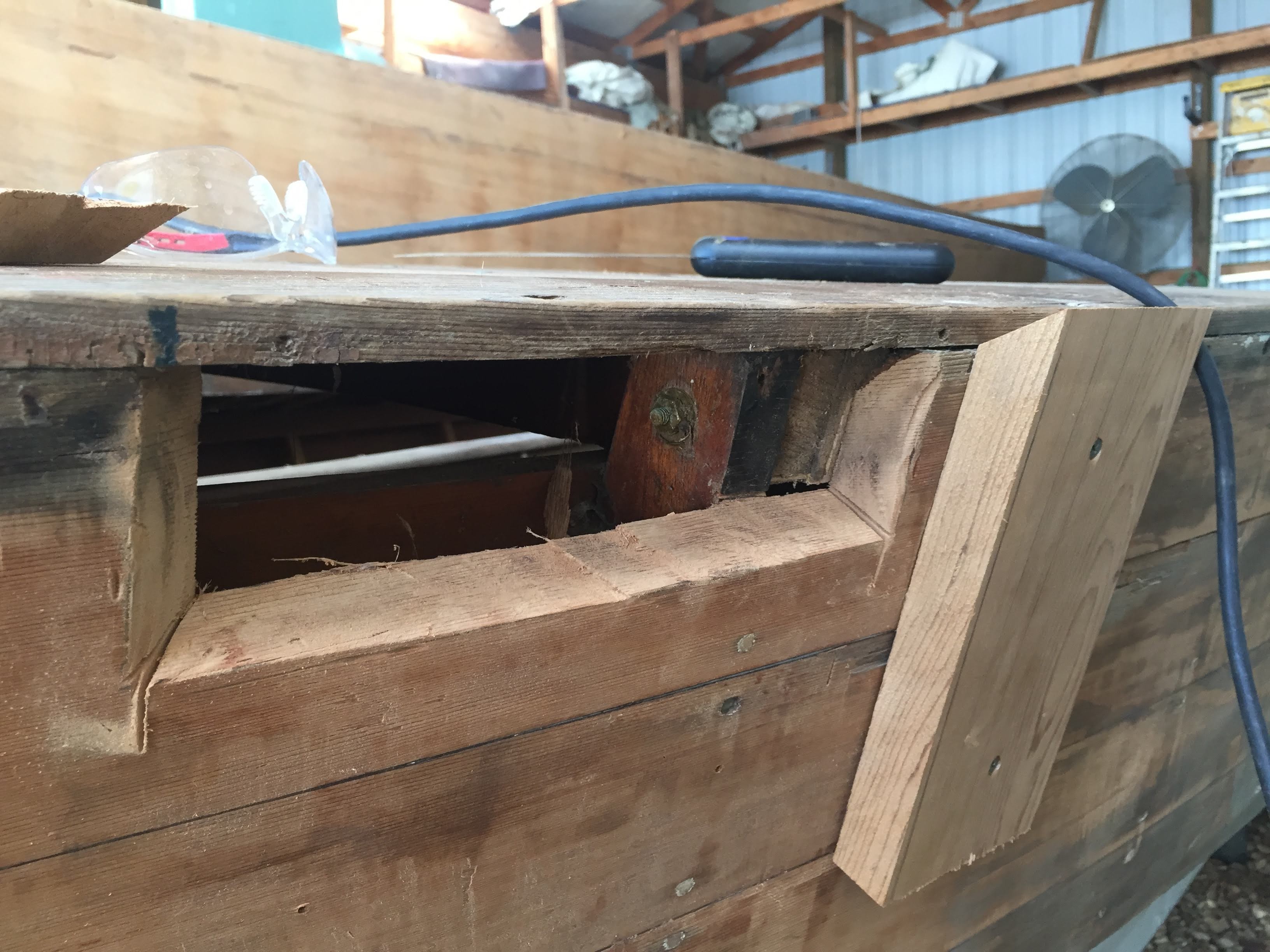
Step 4: Even though the epoxy resin to hardener ratio is 5:1, the pump ratio is still 1:1. Don’t forget that, otherwise your epoxy may never harden. And then you might come back the next day and wonder why it is still gooey. And then you have to scrub away the epoxy on the Dutchman and hole, clean it up with acetone, and sand the surfaces down again before you glue the Dutchman in again. This step is really important and might save you from becoming frustrated with yourself.
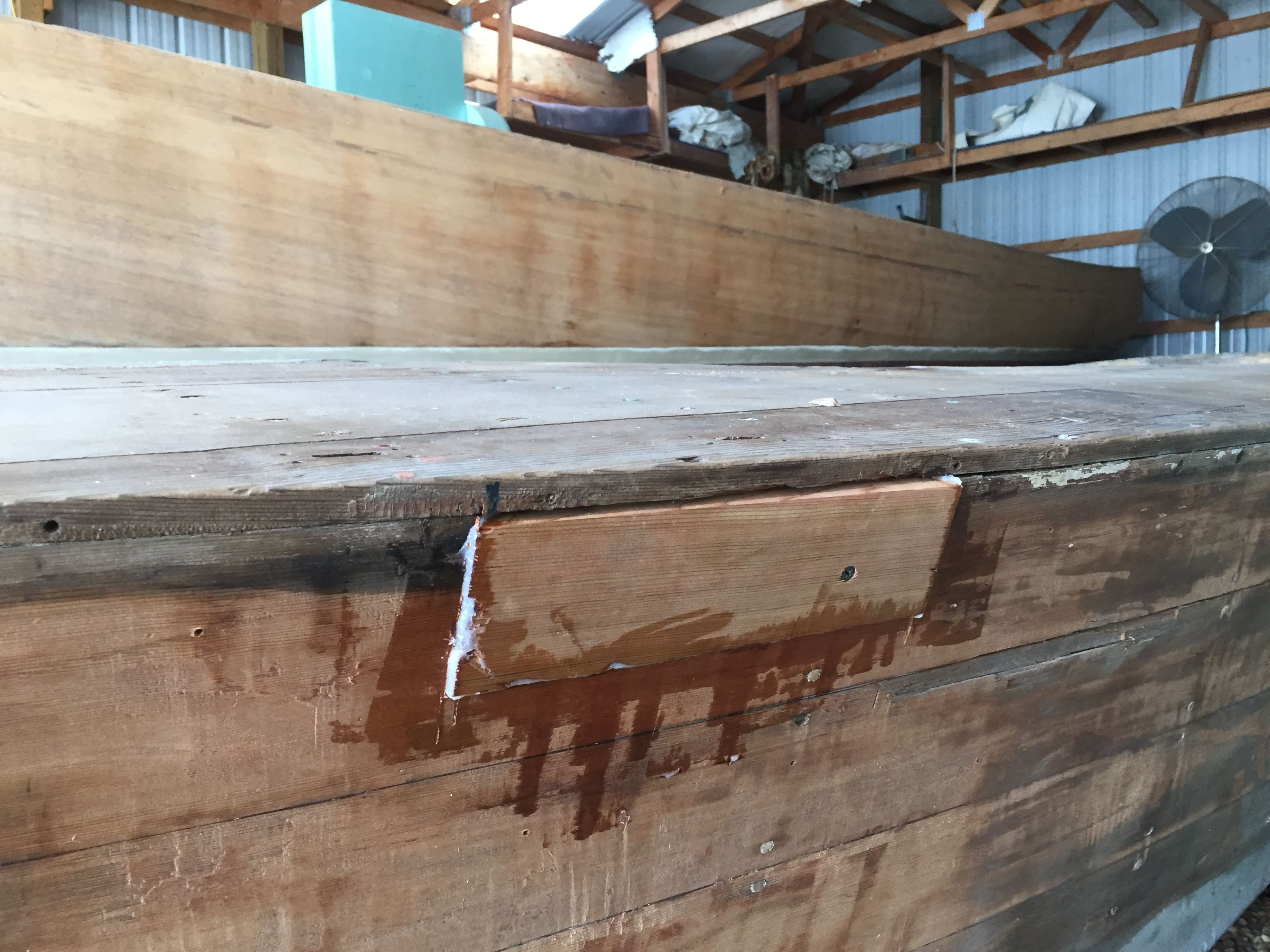
In the end, it turned out great. Sanded the insert down until it felt like part of the original plank.
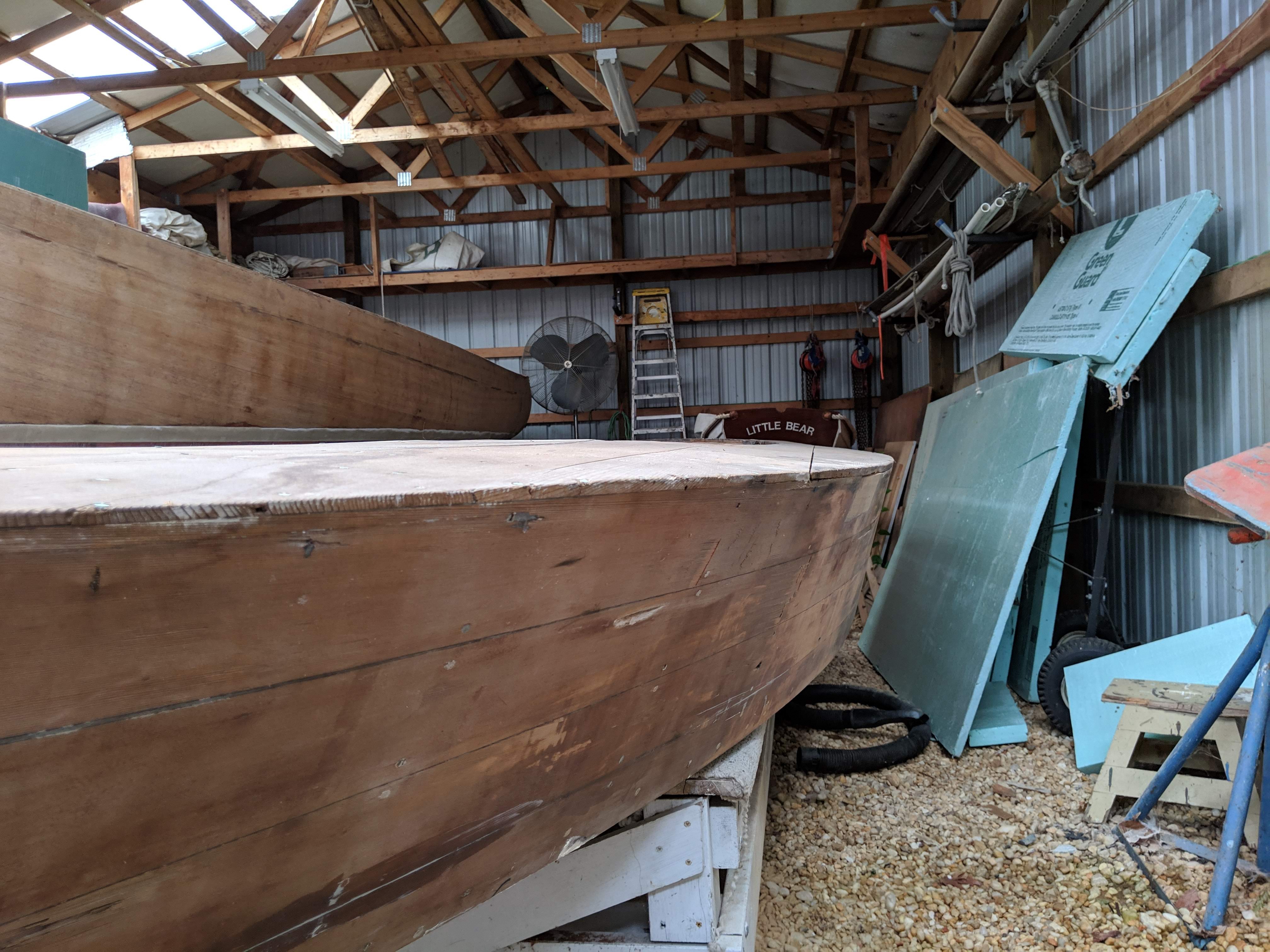
Next stop: fair the deck! Most white splotches are wood putty covering nail heads. I needed the occasional replacement annular nail or screw (bronze! Bill insisted).
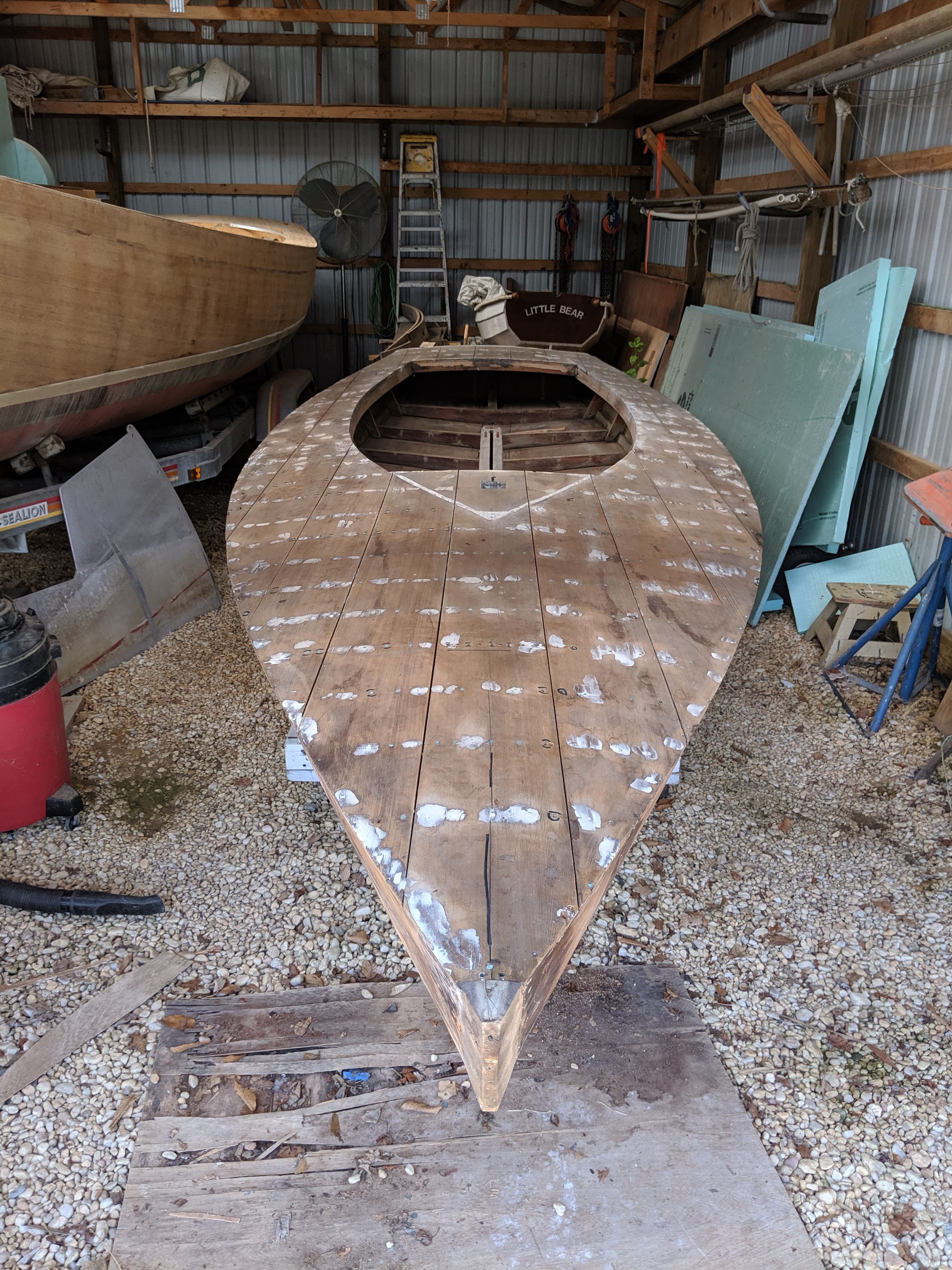
Needless to say, it’s good to be back on the shore.
Erin & Mollie on China Beach:

Looking down the Corsica River:













